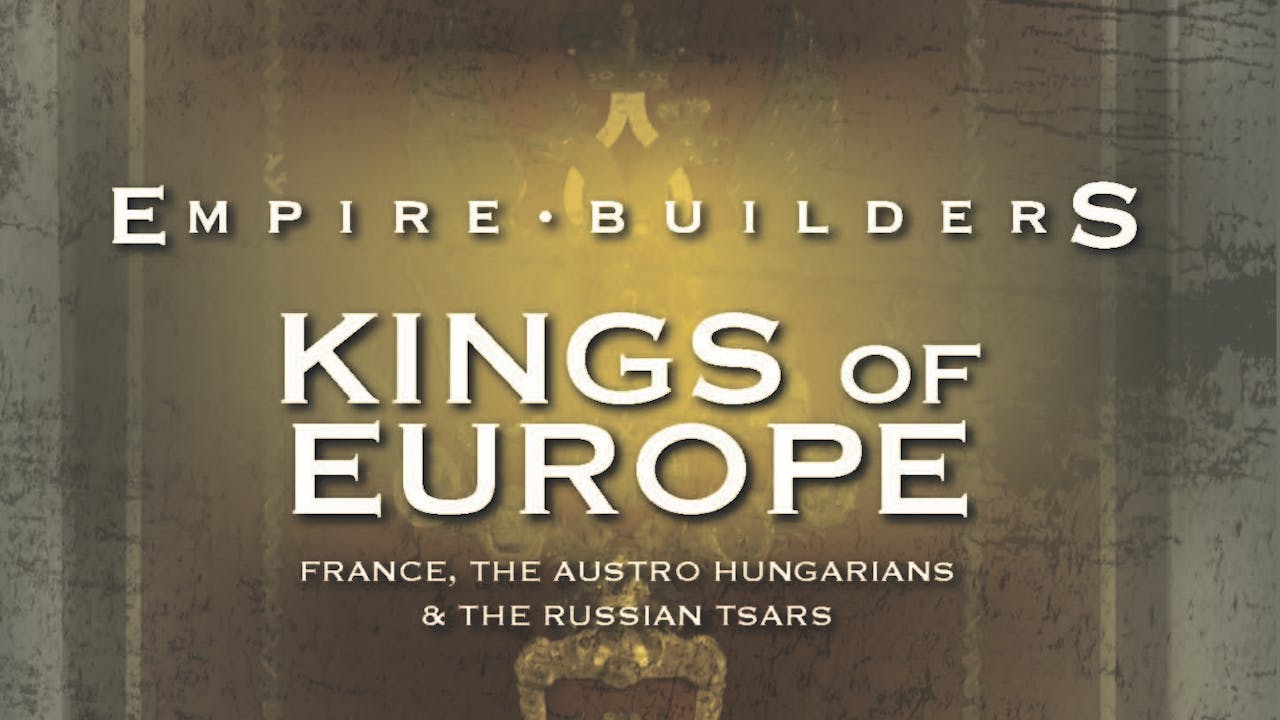Empire Builders - Kings of Europe: End of Empires
"In this episode of Empire Builders we explore the last hurrah of Europe’s Imperial dynasties - in France, Russia, and the Austrian Habsburg empire - whose royal palaces, cathedrals and other great public buildings of the 18th and 19th centuries, memorialise the dramatic final chapter of the rise and fall of Imperial Europe.
Our story starts in the late 18th century, in Paris, France. The extremely grand Louvre Palace had been the French monarchy’s main residence during much of the 16th and 17th centuries, but was turned into a public art museum in 1793 as a result of the French Revolution. Initially, it was the French Revolution’s greatest military leader, Napoleon Bonaparte, who rapidly expanded the Louvre’s collection, filling it up with numerous world-famous artworks that he seized as the spoils of war from Egypt, Italy and elsewhere.
By 1812 Napoleon’s growing empire was at its maximum extent, and seemingly unstoppable. But then he made a huge mistake; in June 1812, his massive army, numbering over half a million men, attacked Russia. Decimated by the ferociously cold Russian winter, less than 30,000 of Napoleon’s troops made it back to France fighting fit. To commemorate Napoleon’s historic defeat, Russia’s Tsar Alexander the 1st built in Moscow the world’s tallest Orthodox Christian church, the Cathedral of Christ the Saviour.
The original cathedral, however, was demolished by Stalin in 1931, during the Communist persecution of religions. Stalin intended to build a vast ‘Palace of the Soviets’ in its place, which was to be the world’s tallest building, but World War Two intervened. Instead, from the 1950s to the 1980s, the abandoned building site became the location of the world’s largest open-air swimming pool. In the 1990s, however, following the collapse of Communism, the cathedral was lavishly reconstructed, replicating the original design.
One of the many curiosities of the Cathedral of Christ the Saviour is that the construction of the original cathedral in the 19th century was on such a grand scale, that although it was built to celebrate the famous victory over Napoleon in 1812, it was still being built in the 1850s, by which time Russia was being disastrously defeated in the Crimean War by an alliance of the Ottoman Empire, Britain and France. In general, the main reason for Russia’s defeat in the Crimean War was its failure to modernise as rapidly as the other European powers. On the battlefield Europe’s other great Empires had more up-to-date military equipment, while back at home this modernising drive was being demonstrated by the radical redesign of many of Europe’s ancient capital cities at this time.
In Paris, for example, during the 1850s and 60s, entire districts of old, narrow streets were demolished in the city centre, and replaced with grand, wide boulevards that give Paris its distinctive appearance today. Elsewhere, the Habsburg Empire’s ancient Imperial capital, Vienna, was also completely redeveloped at this time, with a grand new circular boulevard replacing the city’s ancient medieval walls and moat. Numerous opulent buildings were constructed all along it, of which one of the most magnificent was Vienna’s Opera House.
While the Opera House was being built, Austria was defeated in battle by Prussia in 1866, one of the consequences of which was that the Habsburg Emperor Franz Joseph was forced to offer autonomy in domestic affairs to his empire’s restive province of Hungary. To celebrate this major step towards independence, the Hungarians built a magnificent new Parliament Building in their capital Budapest, which at the time of its completion in 1904 was the world’s largest parliament.
As the result of crushing defeat in World War One alongside allies Germany, the Habsburg Austro-Hungarian Empire disintegrated in 1918, and the Habsburg monarchy was abolished... Just a year earlier, in 1917, the last of the Russian Tsars, Nicholas the 2nd, was also deposed during the Russian Revolution, which itself was triggered by a series of disastrous Russian military defeats in World War One.
The stage for many of the most significant and dramatic events of the Russian Revolution was the Tsars’ vast and luxurious Winter Palace at the heart of St Petersburg. Following the successful storming of the Winter Palace by the Communists, the former Tsar Nicholas the 2nd, now referred to simply as Mr Romanov, was executed in July 1918, along with his wife and all his children.
The execution of the former Tsar of Russia and his family was not only a pivotal moment in Russian history, ushering in 70 years of Communist rule, it was also the final nail in the coffin for the autocratic Imperial dynasties whose great Empires had once held sway over a vast proportion of Europe. Napoleon’s French Empire, the Austrian Habsburg Empire, and now the Russian Tsars, were all consigned to history, and the age of Empire was over.
-
Empire Builders - End of Empires

